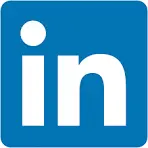5 ways to sell professional services
Author: Leanne Knowles
- Article update: August 2024
- 3 minute read
5 fundamentals to increase sales in service and creative businesses across six industries
Introduction
If you operate a service or creative business, you already know the market is crowded, competitive, and constantly changing. Whether you’re running a tax accounting firm, a physiotherapy clinic, a video production house, a biosecurity consultancy, an adventure tour company, or a direct-to-consumer manufacturing brand — the challenge is the same: how do you stand out, win more customers, and keep them coming back?
In this article, we’ll break down 5 fundamentals that work across six key industry sectors we’ve been working with:
- Professional services
- Personal services
- Creative services
- High tech services
- Place-based businesses
- Direct-to-consumer (DTC) manufacturing
We’ll cover:
- The unique sales challenges for each sector
- The 5 fundamentals of selling in a competitive market
- Practical ways to apply them in your own business
- How to take your first step
The challenges for service and creative businesses
No matter which industry you’re in, if you have a team, high fixed costs, and a dependency on consistent sales, you live and die by your conversion rates. Many businesses are good at generating leads, but struggle to convert them into paying customers.
You might be:
- Spending a fortune on ads without a clear return
- Pitching to the wrong audience
- Offering products or services that don’t stand out
- Facing increased competition, both locally and online
Add to that changing economic conditions, shifts in buyer behaviour, and fast-moving technology, and it’s easy to feel like you’re paddling upstream — working harder for less.
The good news? There are enduring principles of sales success that work no matter what you sell or who you sell it to. Once you know the formula, you can adapt it for your industry and start getting results quickly.
Here’s my 5-part method you can share with your sales and marketing teams to supercharge your conversions and win more of the right clients.
1. Start with campaign strategy
A well-structured campaign strategy sets you up for success long before you have the sales conversation. It ensures your marketing, sales, and product teams are aligned, your message is clear, and your target audience is primed to say yes.
Even the simplest sales process benefits from a campaign strategy that:
- Minimises friction for the customer at every step
- Guides them smoothly from awareness to purchase
- Reduces wasted effort chasing low-quality leads
Sector examples:
- Professional services: A tax accountant running a targeted EOFY campaign for small business owners, with tailored case studies and sector-specific advice.
- Personal services: A physiotherapist offering a seasonal “Spring Reset” program aimed at office workers with back pain, promoted via local corporate networks.
- Creative services: A video production house launching a “Brand Story Package” for startups, with social-ready clips included.
- High tech services: A drone technology firm targeting agricultural companies before harvest season with crop-monitoring packages.
- Place-based: An adventure tour operator promoting mid-week specials to local retirees during off-peak season.
- DTC manufacturing: A custom furniture maker creating a campaign around “Sustainable Style” for eco-conscious buyers.
When your campaign is designed around a clear goal and a defined audience, your sales team spends more time talking to people who are ready to buy.
2. Find the sales sweet spot
The sales sweet spot is where three things align:
- The right product or service
- The right audience
- An irresistible exchange of value
Too many businesses take a scattergun approach, trying to appeal to everyone. The result? Bland offers that don’t stand out and a message that gets lost in the noise.
Sector examples:
- Professional services: Offering an “Audit Readiness Package” to medium-sized companies in a specific industry you know well.
- Personal services: Creating a 6-week transformation program for brides-to-be.
- Creative services: Specialising in short-form video content for local hospitality venues.
- High tech services: Providing a “Rapid Response Compliance Audit” for government contracts in biosecurity.
- Place-based: Packaging a “Locals Only” annual pass for repeat customers.
- DTC manufacturing: Launching a limited-edition product line tied to a cultural or seasonal event.
When you focus your campaign on the sweet spot, you make it easier for customers to say yes — because your offer feels designed just for them.
3. Create an irresistible product offer
Your hero offer should be your most exciting, distinctive, and profitable product or service. Then, add extra value by bundling complementary items, bonus services, or exclusive access — without dramatically increasing your costs.
Spell out the value in tangible terms, and position your pricing so it stands out in the market.
Sector examples:
- Professional services: Bundle compliance services with a quarterly strategy session.
- Personal services: Add a free consultation and follow-up plan to a premium wellness package.
- Creative services: Include a set of social media templates with a branding shoot.
- High tech services: Pair drone mapping with post-project analytics and recommendations.
- Place-based: Add a complimentary photo package for tour participants.
- DTC manufacturing: Include a care and maintenance kit with every purchase over a certain value.
This makes your offer harder to compare directly with competitors — and more compelling to your audience.
4. Know your customer better than your competitors
When you try to market to everyone, you end up connecting with no one. For each campaign, choose one audience segment and go deep.
Ask yourself:
- Who has a problem my business can uniquely solve?
- Can I solve it better than anyone else?
- Will it be profitable and sustainable to serve this group?
Then, tailor your messaging to their language, priorities, and buying triggers.
Sector examples:
- Professional services: Target SMEs in one industry, using their jargon and case studies from similar businesses.
- Personal services: Focus on new parents seeking time-efficient health solutions.
- Creative services: Speak directly to marketing managers under pressure to deliver quick content wins.
- High tech services: Address procurement officers in government departments with security and compliance concerns.
- Place-based: Promote to interstate travellers planning a short getaway.
- DTC manufacturing: Engage eco-conscious buyers who value sustainable materials and processes.
5. Perfect the exchange of value
Ultimately, your customer decides how valuable your offer is — and how much they’re willing to pay. By understanding their priorities and the alternatives available, you can craft offers that make pricing less of an objection.
Sector examples:
- Professional services: Guarantee time savings or compliance risk reduction.
- Personal services: Promise measurable results within a defined timeframe.
- Creative services: Offer faster delivery times without sacrificing quality.
- High tech services: Provide exclusive access to new tools or data.
- Place-based: Give loyalty members priority booking for peak seasons.
- DTC manufacturing: Offer lifetime repair or replacement guarantees.
Which businesses can use these strategies?
These fundamentals work across most industry sector, whether you sell to consumers, other businesses, or government. The key is to adapt them to your target audience, your unique strengths, your freedom goals, and the outcomes you can deliver better than anyone else.
How to take the next step
If you run a service or creative business in any of these six sectors and want to increase your sales conversions, here’s where to start:
Pick one product or service to focus on.
Choose one audience segment and one campaign goal.
Build your campaign strategy around the full customer journey.
Refine your offer to make it irresistible.
Track results, then tweak and improve for the next round.
Final word
Sales success isn’t about chasing every lead or undercutting on price — it’s about targeting the right people with the right offer at the right time. When you get your campaign strategy, sales sweet spot, and exchange of value right, you not only increase your conversion rates — you also build a stronger, more resilient business in any market.
More articles about increasing sales for your service or creative business
- Before you do another AI eBook, do this one thing
- The 12 money levers: how to grow your profit without working more hours
- Build a brand that attracts more customers
- 21 ways to improve small business marketing results
- 10 ways to drive small business revenue growth and scale
My 3 Page Marketing Action Plan
A good place to start is a review of how well your sales and marketing activities are working together. Here is My 3 Page Marketing Action Plan that I have used in my own business to help me build out my online sales and marketing strategy. It’s yours for free and it’s an easy download, so just click on the link below and you’re on your way to the next step.
About Leanne Knowles
Leanne Knowles is a former professional skydiver turned Business Growth Strategist, who started two successful businesses in the adventure sport industry at 24 years old and sold them both ten years later. Leanne founded Headswitch as a marketing consultancy in January 2000, and now helps business owners in B2B and professional services to grow and scale their business using smart, simple strategies, the latest tech tools, and productive business relationships.












